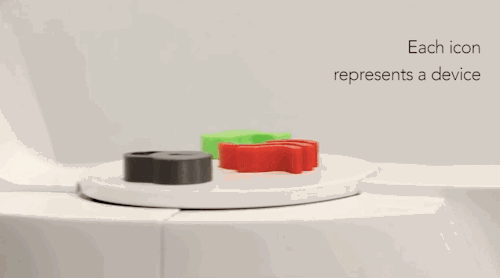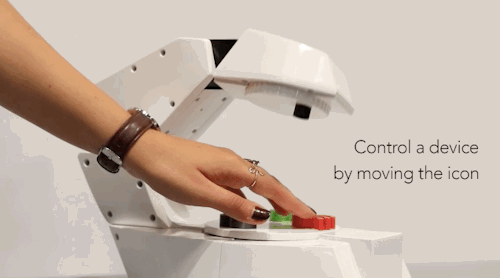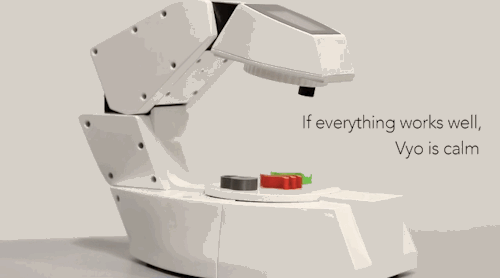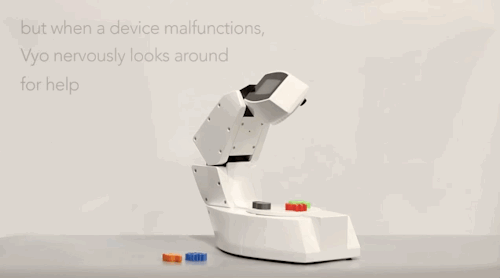Stubborn-turtle-blog


More Posts from Stubborn-turtle-blog and Others
Why do we not discuss clouds more?

I mean look at that. That’s water.

Flying water.

FLYING

FUCKING

WATER
LIKE WHAT THE FUCK, WHY DO WE EVER STOP TALKING ABOUT THIS
WHAT IS THIS
HOW IS THIS EVEN

AND NOW THE FLYING WATER IS EATING A MOUNTAIN
GOD DAMN, WHAT
Using the Power of Space to Fight Cancer
From cancer research to DNA sequencing, the International Space Space is proving to be an ideal platform for medical research. But new techniques in fighting cancer are not confined to research on the space station. Increasingly, artificial intelligence is helping to “read” large datasets. And for the past 15 years, these big data techniques pioneered by our Jet Propulsion Laboratory have been revolutionizing biomedical research.
Microgravity Research on Space Station
On Earth, scientists have devised several laboratory methods to mimic normal cellular behavior, but none of them work exactly the way the body does. Beginning more than 40 years ago aboard Skylab and continuing today aboard the space station, we and our partners have conducted research in the microgravity of space. In this environment, in vitro cells arrange themselves into three-dimensional groupings, or aggregates. These aggregates more closely resemble what actually occurs in the human body. Cells in microgravity also tend to clump together more easily, and they experience reduced fluid shear stress – a type of turbulence that can affect their behavior. The development of 3D structure and enhanced cell differentiation seen in microgravity may help scientists study cell behavior and cancer development in models that behave more like tissues in the human body.

In addition, using the distinctive microgravity environment aboard the station, researchers are making further advancements in cancer therapy. The process of microencapsulation was investigated aboard the space station in an effort to improve the Earth-based technology. Microencapsulation is a technique that creates tiny, liquid-filled, biodegradable micro-balloons that can serve as delivery systems for various compounds, including specific combinations of concentrated anti-tumor drugs. For decades, scientists and clinicians have looked for the best ways to deliver these micro-balloons, or microcapsules, directly to specific treatment sites within a cancer patient, a process that has the potential to revolutionize cancer treatment.

A team of scientists at Johnson Space Center used the station as a tool to advance an Earth-based microencapsulation system, known as the Microencapsulation Electrostatic Processing System-II (MEPS-II), as a way to make more effective microcapsules. The team leveraged fluid behavior in microgravity to develop a new technique for making these microcapsules that would be more effective on Earth. In space, microgravity brought together two liquids incapable of mixing on Earth (80 percent water and 20 percent oil) in such a way that spontaneously caused liquid-filled microcapsules to form as spherical, tiny, liquid-filled bubbles surrounded by a thin, semipermeable, outer membrane. After studying these microcapsules on Earth, the team was able to develop a system to make more of the space-like microcapsules on Earth and are now performing activities leading to FDA approval for use in cancer treatment.

In addition, the ISS National Laboratory managed by the Center for the Advancement of Science in Space (CASIS) has also sponsored cancer-related investigations. An example of that is an investigation conducted by the commercial company Eli Lilly that seeks to crystallize a human membrane protein involved in several types of cancer together with a compound that could serve as a drug to treat those cancers.
“So many things change in 3-D, it’s mind-blowing – when you look at the function of the cell, how they present their proteins, how they activate genes, how they interact with other cells,” said Jeanne Becker, Ph.D., a cell biologist at Nano3D Biosciences in Houston and principal investigator for a study called Cellular Biotechnology Operations Support Systems: Evaluation of Ovarian Tumor Cell Growth and Gene Expression, also known as the CBOSS-1-Ovarian study. “The variable that you are most looking at here is gravity, and you can’t really take away gravity on Earth. You have to go where gravity is reduced."
Crunching Big Data Using Space Knowledge

Our Jet Propulsion Laboratory often deals with measurements from a variety of sensors – say, cameras and mass spectrometers that are on our spacecraft. Both can be used to study a star, planet or similar target object. But it takes special software to recognize that readings from very different instruments relate to one another.
There’s a similar problem in cancer research, where readings from different biomedical tests or instruments require correlation with one another. For that to happen, data have to be standardized, and algorithms must be “taught” to know what they’re looking for.
Because space exploration and cancer research share a similar challenge in that they both must analyze large datasets to find meaning, JPL and the National Cancer Institute renewed their research partnership to continue developing methods in data science that originated in space exploration and are now supporting new cancer discoveries.
JPL’s methods are leading to the development of a single, searchable network of cancer data that researcher can work into techniques for the early diagnosis of cancer or cancer risk. In the time they’ve worked together, the two organizations’ efforts have led to the discovery of six new Food and Drug Administration-approved cancer biomarkers. These agency-approved biomarkers have been used in more than 1 million patient diagnostic tests worldwide.
Make sure to follow us on Tumblr for your regular dose of space: http://nasa.tumblr.com

Read more comics like this at smbc-comics.com
Like this strip? Buy a print!






Archstudio. Alley Teahouses- Qulang Hospital. Beijing. China. photos: Archstudio

y’alllllllllllllllllllllllllllllll there’s a children’s book
(h/t listener Elissa!)
Getting to Mars: What It’ll Take
Join us as we take a closer look at the next steps in our journey to the Red Planet:
The journey to Mars crosses three thresholds, each with increasing challenges as humans move farther from Earth. We’re managing these challenges by developing and demonstrating capabilities in incremental steps:
Earth Reliant

Earth Reliant exploration is focused on research aboard the International Space Station. From this world-class microgravity laboratory, we are testing technologies and advancing human health and performance research that will enable deep space, long duration missions.
On the space station, we are advancing human health and behavioral research for Mars-class missions. We are pushing the state-of-the-art life support systems, printing 3-D parts and analyzing material handling techniques.
Proving Ground

In the Proving Ground, we will learn to conduct complex operations in a deep space environment that allows crews to return to Earth in a matter of days. Primarily operating in cislunar space (the volume of space around the moon). We will advance and validate the capabilities required for humans to live and work at distances much farther away from our home planet…such as at Mars.
Earth Independent

Earth Independent activities build on what we learn on the space station and in deep space to enable human missions to the Mars vicinity, possibly to low-Mars orbit or one of the Martian moons, and eventually the Martian surface. Future Mars missions will represent a collaborative effort between us and our partners.

Did you know….that through our robotic missions, we have already been on and around Mars for 40 years! Taking nearly every opportunity to send orbiters, landers and rovers with increasingly complex experiments and sensing systems. These orbiters and rovers have returned vital data about the Martian environment, helping us understand what challenges we may face and resources we may encounter.

Through the Asteroid Redirect Mission (ARM), we will demonstrate an advanced solar electric propulsion capability that will be a critical component of our journey to Mars. ARM will also provide an unprecedented opportunity for us to validate new spacewalk and sample handling techniques as astronauts investigate several tons of an asteroid boulder.
Living and working in space require accepting risks – and the journey to Mars is worth the risks. A new and powerful space transportation system is key to the journey, but we will also need to learn new ways of operating in space.
We Need You!

In the future, Mars will need all kinds of explorers, farmers, surveyors, teachers…but most of all YOU! As we overcome the challenges associated with traveling to deep space, we will still need the next generation of explorers to join us on this journey. Come with us on the journey to Mars as we explore with robots and send humans there one day.
Join us as we go behind-the-scenes:
We’re offering a behind-the-scenes look Thursday, Aug. 18 at our journey to Mars. Join us for the following events:
Journey to Mars Televised Event at 9:30 a.m. EDT Join in as we host a conversation about the numerous efforts enabling exploration of the Red Planet. Use #askNASA to ask your questions! Tune in HERE.
Facebook Live at 1:30 p.m. EDT Join in as we showcase the work and exhibits at our Michoud Assembly Facility. Participate HERE.
Hot Fire Test of an RS-25 Engine at 6 p.m. EDT The 7.5-minute test is part of a series of tests designed to put the upgraded former space shuttle engines through the rigorous temperature and pressure conditions they will experience during a launch. Watch HERE.
Make sure to follow us on Tumblr for your regular dose of space: http://nasa.tumblr.com

We promise we did not use Mad-Libs to write this headline.
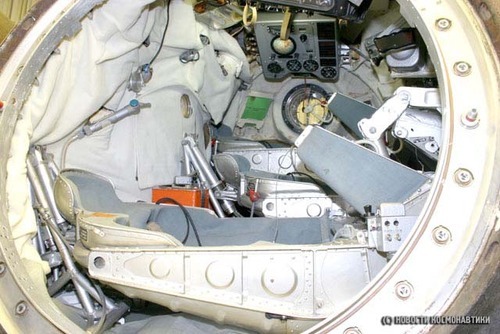
Voskhod-the first multiple-manned mission
Although we now take for granted the long term success of the International Space Station, it wasn’t too long ago that we were totally earthbound. That changed on this day, October 12, 1964 when the Soviet Union launched the Voskhod 1 (Восхо́д), the first manned capsule to carry more than one person into space. The Voskhod program was a proof of concept program to test systems for more ambitious space exploration. The Voskhod program was notable for several firsts: the first multi-person mission to space (Cosmonauts Komarov, Yegorov and Feoktistov in the Voskhod 1) and the first space walk (Belyayev and Leonov in Voskhod 2). The Vostok and Voskhod programs provided the framework for what became the Soyuz program and ultimately the current ISS.
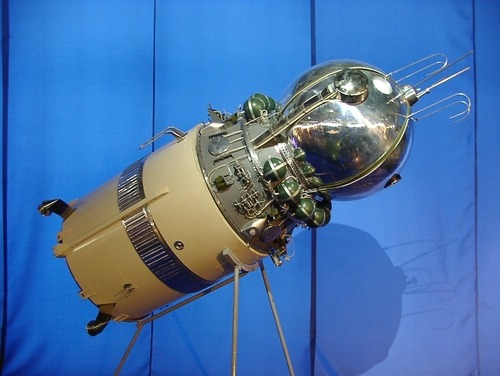
The Russian desire to ‘win’ the Space Race led to many dangerous compromises. The interior of the capsule (shown above) was so cramped that the cosmonauts would not have room for space suits, making the flight extremely dangerous in the event of depressurisation. To insure the engineers paid enough attention to this, head designer Sergei Korolev assigned the lead engineer to fly inside the capsule, therefore motivating him to design the safest capsule possible.

The Russian word Voskhod (Восхо́д) means sunrise and is a combination of the Russian words vos- (from vostok восток) meaning east and xodete (ходить) meaning go or rise.
These almost remind me of Elven ruins
-
 sirzenithknight9 reblogged this · 6 months ago
sirzenithknight9 reblogged this · 6 months ago -
 sylv7788 liked this · 9 months ago
sylv7788 liked this · 9 months ago -
 caffeinosis reblogged this · 9 months ago
caffeinosis reblogged this · 9 months ago -
 metallic-mermaid reblogged this · 1 year ago
metallic-mermaid reblogged this · 1 year ago -
 ghostofbriggiesmalls liked this · 1 year ago
ghostofbriggiesmalls liked this · 1 year ago -
 petite-ursus reblogged this · 1 year ago
petite-ursus reblogged this · 1 year ago -
 certainpeachnightmare liked this · 1 year ago
certainpeachnightmare liked this · 1 year ago -
 nerfdart-hickey liked this · 1 year ago
nerfdart-hickey liked this · 1 year ago -
 merlions reblogged this · 1 year ago
merlions reblogged this · 1 year ago -
 invisibleman93 reblogged this · 1 year ago
invisibleman93 reblogged this · 1 year ago -
 confusedladykira reblogged this · 1 year ago
confusedladykira reblogged this · 1 year ago -
 invisibleman93 liked this · 1 year ago
invisibleman93 liked this · 1 year ago -
 wickedwitch-of-the-left reblogged this · 1 year ago
wickedwitch-of-the-left reblogged this · 1 year ago -
 wickedwitch-of-the-left liked this · 1 year ago
wickedwitch-of-the-left liked this · 1 year ago -
 transurfingers reblogged this · 1 year ago
transurfingers reblogged this · 1 year ago -
 channmander reblogged this · 1 year ago
channmander reblogged this · 1 year ago -
 imsorryjoyboy reblogged this · 1 year ago
imsorryjoyboy reblogged this · 1 year ago -
 twunk liked this · 1 year ago
twunk liked this · 1 year ago -
 thefantastickatinator liked this · 1 year ago
thefantastickatinator liked this · 1 year ago -
 jollycaptrogers liked this · 1 year ago
jollycaptrogers liked this · 1 year ago -
 imsorryjoyboy liked this · 1 year ago
imsorryjoyboy liked this · 1 year ago -
 burnthybread liked this · 1 year ago
burnthybread liked this · 1 year ago -
 rrdiner reblogged this · 1 year ago
rrdiner reblogged this · 1 year ago -
 lorewhoresam reblogged this · 1 year ago
lorewhoresam reblogged this · 1 year ago -
 lorewhoresam liked this · 1 year ago
lorewhoresam liked this · 1 year ago -
 theprincessandthepie reblogged this · 1 year ago
theprincessandthepie reblogged this · 1 year ago -
 peaches-bee liked this · 1 year ago
peaches-bee liked this · 1 year ago -
 big-low-t liked this · 1 year ago
big-low-t liked this · 1 year ago -
 ub-sessed liked this · 1 year ago
ub-sessed liked this · 1 year ago -
 belialjones reblogged this · 1 year ago
belialjones reblogged this · 1 year ago -
 siterlas reblogged this · 1 year ago
siterlas reblogged this · 1 year ago -
 anonsally liked this · 1 year ago
anonsally liked this · 1 year ago -
 austengeek liked this · 1 year ago
austengeek liked this · 1 year ago -
 scarcelyodd reblogged this · 1 year ago
scarcelyodd reblogged this · 1 year ago -
 sulstice liked this · 1 year ago
sulstice liked this · 1 year ago -
 daisyrosekitty liked this · 1 year ago
daisyrosekitty liked this · 1 year ago -
 altruistic-meme liked this · 1 year ago
altruistic-meme liked this · 1 year ago -
 chalksoul liked this · 1 year ago
chalksoul liked this · 1 year ago -
 optionalcausality reblogged this · 1 year ago
optionalcausality reblogged this · 1 year ago -
 sparefandoms2 reblogged this · 1 year ago
sparefandoms2 reblogged this · 1 year ago -
 rooksnooks reblogged this · 1 year ago
rooksnooks reblogged this · 1 year ago -
 rooksnooks liked this · 1 year ago
rooksnooks liked this · 1 year ago -
 piranhafish liked this · 1 year ago
piranhafish liked this · 1 year ago -
 mydonkeyfeet liked this · 1 year ago
mydonkeyfeet liked this · 1 year ago -
 kickingassandtakingsnames liked this · 1 year ago
kickingassandtakingsnames liked this · 1 year ago -
 des8pudels8kern reblogged this · 1 year ago
des8pudels8kern reblogged this · 1 year ago -
 the-ghostcrew reblogged this · 1 year ago
the-ghostcrew reblogged this · 1 year ago -
 truebluespark liked this · 1 year ago
truebluespark liked this · 1 year ago
Gaming, Science, History, Feminism, and all other manners of geekery. Also a lot of dance
243 posts

